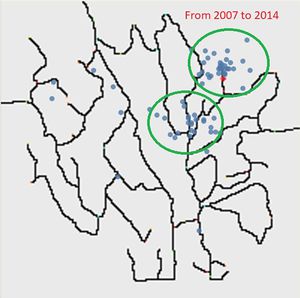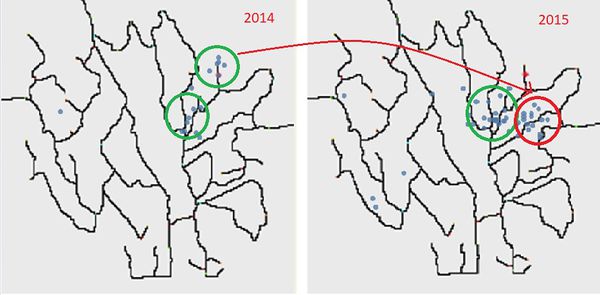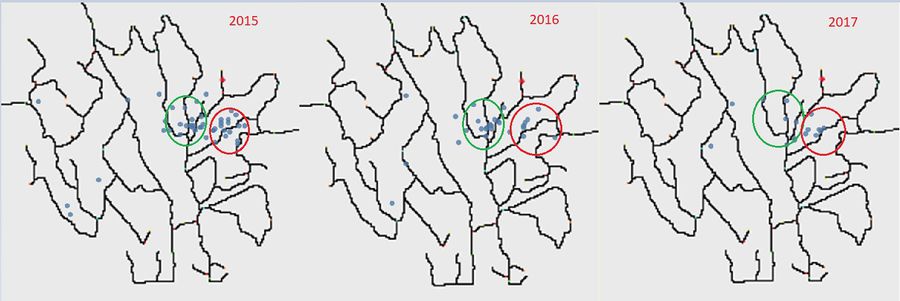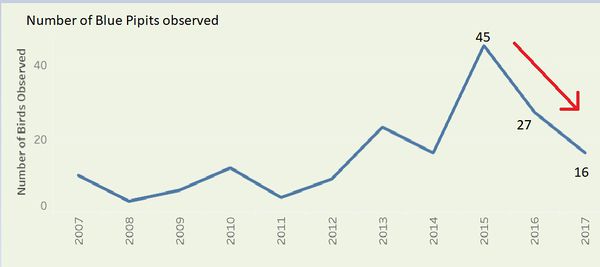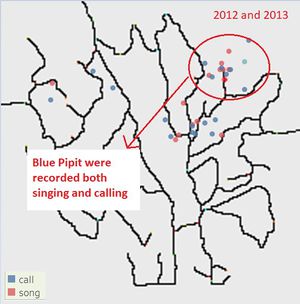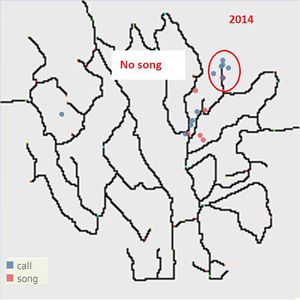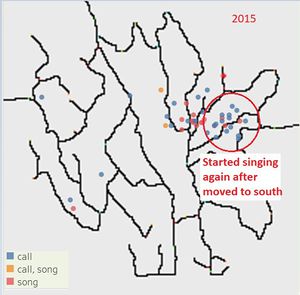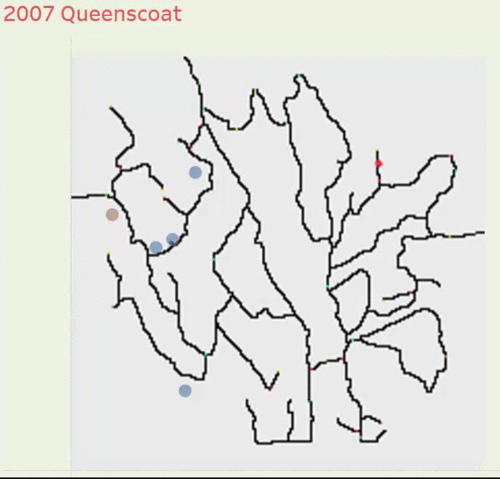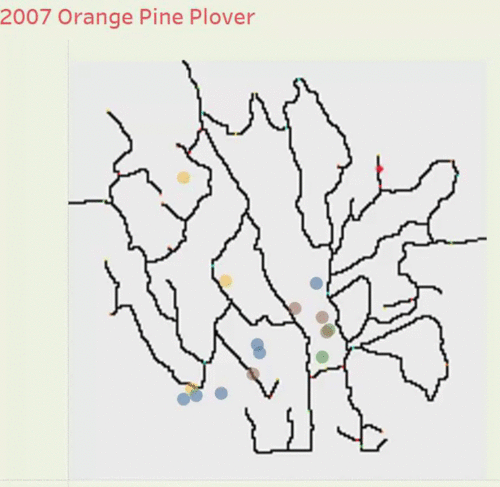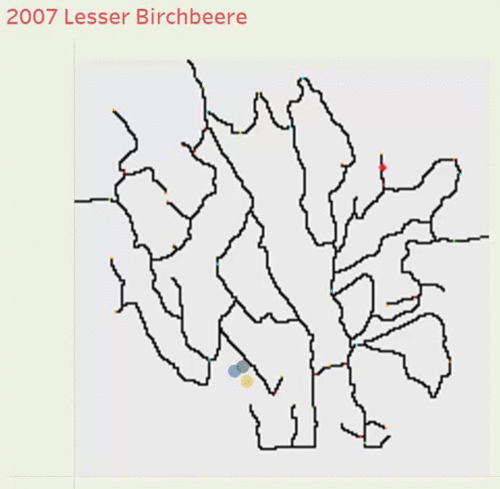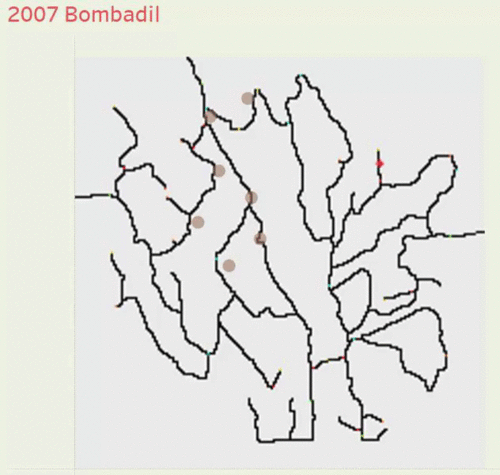ISSS608 2017-18 T3 Assign Sun Shuangtian Migration Pattern
|
|
|
|
|
|
|
|
Contents
Rose-crested Blue Pipits
Migration
From 2007 to 2014, there are mainly 2 groups of blue pipits in northeast part of the preserve, one is around the suspicious dumping site, the other one is at southwest of the suspicious dumping site.
From 2014 to 2015, the group of Blue Pipits around the suspicious dumping site moved south.
In 2015 and 2017, this group of blue pipits stay north and stop further migrating.
Decreasing Population
From 2015 to 2016, the number of observed Blue Pipit decreased dramatically from 45 records to 27 records and it kept decreasing in 2017 to only 16 records. This suggested that the Blue Pipit are not a thriving population in the Preserve.
Stop Singing Near Dumping Site in 2014
In 2014, the group of Blue Pipit which live near the suspicious dumping site were only recorded “calling” not “singing”. However, there are song voice being recorded in earlier years of 2012 and 2013. After they migrated to the south of the suspicious dumping site, song was recorded again. This suggested that the Blue Pipit near this area may not live happily in 2014.
Queenscoat
From 2007 to 2017, the Queenscoats appear mainly at northwest of the Preserve and they don’t migrate over the years.
Orange Pine Plover
From 2007 to 2017, there are mainly two groups of Orange Pine Plovers, one group appears in southwest of the Preserve, the other group appears in southwest of the Preserve. They both don’t migrate over the years.
Lesser Birchbeere
Similarly to the Orange Pine Plover, from 2007 to 2017, there are mainly two groups of Lesser Birchbeeres in the Preserve. one group appears in southwest of the Preserve, the other group appears in southwest of the Preserve. They both don’t migrate over the years.
Bombadil
Bombadil appears mainly at northwest of the Preserve and they do not migrate over the years.
Summary
From the distribution pattern of the other species such as Queenscoat and Orange Pine Plovers we could conclude that the birds usually don’t migrate around the Preserve. However, in 2015, a group of Rose-crested Blue Pipit obviously move away from the specious dumping site and they stop further moving in 2016 and 2017.Besides, they were not observed singing in the previous year of 2014 before moving away from the dumping site. Therefore, we deduce that there must be something unusual in original habitat near the suspicious dumping site which force them to migrate.

